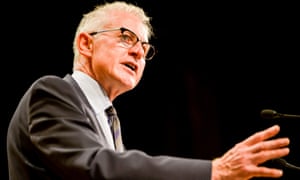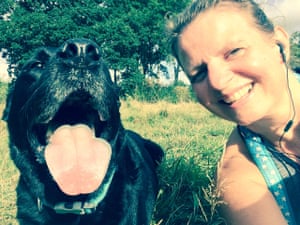The health service has too few staff and too little money to deliver the government’s promised “truly seven-day NHS” on time and patients may not notice any difference even if it happens, leaked Department of Health documents reveal.
Confidential internal DH papers drawn up for Jeremy Hunt and other ministers in late July show that senior civil servants trying to deliver what was a totemic Conservative pledge in last year’s general election have uncovered 13 major “risks” to it.
While Hunt has been insisting that the NHS reorganise around seven-day working, the documents show civil servants listing a string of dangers in implementing the plan – as summarised by a secret “risk register” of the controversial proposal that has prompted a bitter industrial dispute with junior doctors.
The biggest danger, the officials said, is “workforce overload” – a lack of available GPs, hospital consultants and other health professionals “meaning the full service cannot be delivered”, they say in documents that have been obtained by the Guardian and Channel 4 News.
The risk register and other documents also show that the DH sees the NHS’s 1.5 million staff, especially doctors, as a “barrier” to the high-profile but controversial ambition of increasing patients’ access to hospitals and GP surgeries at weekends “because they do not believe in the case for change”.
Hunt has angered hospital consultants and junior doctors over the last year by ordering them to work more at weekends in order to help deliver the seven-day goal, even though both groups are often on duty on Saturday and Sunday.
Juniors have held eight days of strikes to protest against a new contract Hunt is imposing on them which they claim ignores the need for extra doctors to enable the expansion of care he wants – a claim that the BMA said was vindicated by the documents.
Dr Mark Porter, leader of the British Medical Association, said the papers proved that government had ignored warnings from healthcare organisations, especially that a lack of extra staff and more funding would hinder progress. That it has also “disregarded its own risk assessment’s warnings about the lack of staffing and funding needed to deliver further seven-day services, is both alarming and incredibly disappointing”, he added.
He also seized on the DH’s admission in the documents that it still has not worked out what No 10’s objectives were. In pushing ahead with implementing the plan, Porter said: “[It] only goes to show that this was nothing more than a headline-grabbing soundbite set to win votes rather than improve care for patients.”
Shortly after the May 2015 election, David Cameron, the then prime minister, made a speech in which he referred on 18 separate occasions to his “plan” for a seven-day NHS. Fourteen months later, the BMA added, that the documents show that there was still a painful lack of detail.
The papers also show that senior officials at the Department of Health:
• Fear the seven day plan might fail to deliver its stated aims, which include improving the quality of hospital care at weekends and reducing death rates among those admitted for treatment as an emergency on Saturday or Sunday. “It is possible that the programme delivers the planned outputs, but this does not result in the desired change (delivering against the plan but missing the point),” one states.
• Voice concern that there is also a risk that even if weekend services are successfully enhanced, that “patients do not report any difference/improvement in their experience [of] out of hours and at the weekend”.
• Worry that Britain’s decision on 23 June to leave the European Union “may adversing (sic) impact upon the delivery of the 7 Day Services programme, particularly with regards to workforce and finances” because the NHS employs 55,000 staff from around the EU.
A DH spokesman said: “Over the past six years eight independent studies have set out the evidence for a ‘weekend effect’ – unacceptable variation in care across the week. This government is the first to tackle this, with a commitment to a safer, seven day NHS for patients and£10bn to fund the NHS’s own plan for the future, alongside thousands of extra doctors and nurses on our wards.”
A department source added: “A risk register by definition details all potential issues under a worst-case scenario to help the government develop robust plans to ensure we meet our promises to the electorate, but we are confident our programme for a safer seven-day NHS is on track, and will deliver real benefits for patients.”
Hunt has persistently championed the idea of a seven-day NHS. On 25 April the health secretary told MPs of “the government’s determination to be the first country in the world to offer a proper patient-focused seven-day health service”. In that speech he specifically rejected “the concern that a seven-day NHS might spread resources too thinly”.
That was unfounded, Hunt said, because the government has increased doctor numbers by 10,100 since 2010 and would add a further 11,420 to the headcount by 2020.
The documents also show that privately some of Hunt’s most senior civil servants worry that the pledge to increase the NHS budget by £10bn by 2020-21 will not be enough to deliver the promised NHS expansion by 2020. The risk register notes that much of the £10bn will not reach the NHS until near the end of this parliament and thus not be immediately available to fund the changes. “This could result in ‘back loaded’ delivery increasing the risk that deadlines for completing roll-out [between now and 2020] are missed,” they say.
Several of the risks reveal damaging internal disagreements among those taking forward the seven-day drive, including over what the purpose of the plan is. That included tension between the DH and Downing Street in May when Cameron was still in power. In a section of the risk register headed “scope creep”, which was last reviewed on 10 May, it says: “The planned objectives and scope of the programme do not meet the expectations of No10/Cabinet Office, meaning that they may continue to change. This could lead to an inability to deliver the desired outcomes to the agreed timescales.”
Prof Chris Ham, the chief executive of the King’s Fund, rejected Hunt’s insistence that the £10bn was enough to deliver a seven-day NHS by 2020.
“It is not credible to argue that it can continue to meet rising demand for services, maintain standards of care and deliver new commitments such as seven-day services within its current budget,” he said. “Implementing seven-day services is a laudable ambition but is not realistic unless additional funding becomes available and workforce challenges can be overcome.”.
The shadow health secretary, Diane Abbott, said: “This is a shocking indictment of the Tory government’s plans. They pressed ahead with their proposals even when campaigners and NHS staff argued they were unworkable. It has now been confirmed by the advice the government received from its own civil servants.
“This is a scandal. The government is undermining the NHS with plans it knew to be unworkable.”
Abbott said she would be contacting Hunt to see if he had misled parliament.
Secret documents reveal official concerns over "seven-day NHS" plans




